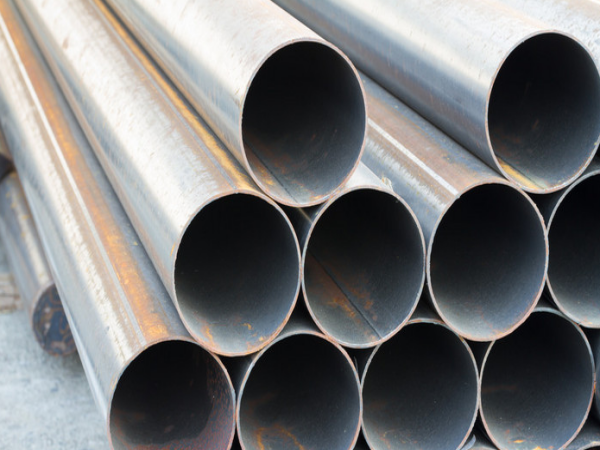The mechanical properties of
carbon steel pipe are important indicators to ensure the performance (mechanical properties) of steel, and it depends on the chemical composition of the steel and the heat treatment system. In the steel pipe standard, according to different application requirements, the tensile properties (tensile strength, yield strength or yield point, elongation), hardness and toughness indicators, and high and low temperature properties required by users are specified.

Performance index 1: Tensile strength (σb)
In the tensile process, the force (Fb) that the specimen bears when it breaks is divided by the original cross-sectional area (So) of the specimen. The stress (σ) is called the tensile strength (σb), and the unit is N/mm2 (MPa). ). It represents the greater ability of metal materials to resist damage under tensile force.
Performance index 2: Yield point (σs)
For metallic materials with a yield phenomenon, the stress at which the sample can continue to elongate (maintain constant) without increasing the force during the stretching process is called the yield point. If the force drops, a distinction should be made between the upper yield point and the lower yield point. The unit of yield point is N/mm2 (MPa).
Upper yield point (σsu): the larger stress before the specimen yields, and the force drops; Lower yield point (σsl): the smaller stress in the yield stage without considering the initial transient effect.
The calculation formula of the yield point is:
In the formula: Fs——yield force (constant) during the tensile process of the sample, N (Newton) So——the original cross-sectional area of the sample, mm2.
Performance index 3: Elongation after breaking (σ)
In the tensile test, the percentage of the gauge length that increases to the original gauge length after the sample breaks is called the elongation. Expressed by σ, the unit is a percent sign.
In the formula: Lh——the gauge length after the sample is broken, mm; L0——the original gauge length of the sample, mm.
Performance index 4: Area shrinkage rate (ψ)
In the tensile test, the percentage of the larger reduction of the cross-sectional area at the reduced diameter of the sample after the sample breaks to the original cross-sectional area is called the reduction of the cross-sectional area. Expressed in ψ, the unit is a percent sign. The calculation is as follows:
In the formula: S0-the original cross-sectional area of the sample, mm2; S1-the smaller cross-sectional area at the reduced diameter of the sample after crushing, mm2.
Performance index 5: hardness index
The ability of metal materials to resist indentation on the surface of hard objects is called hardness. According to different test methods and scope of application, hardness can be divided into Brinell hardness, Rockwell hardness, Vickers hardness, Shore hardness, micro hardness and high temperature hardness. There are three commonly used pipes: Brinell hardness, Rockwell hardness and Vickers hardness.













 Eastern Steel Manufacturing Co.,Ltd not only improve product production and sales services, but also provide additional value-added services. As long as you need, we can complete your specific needs together.
Eastern Steel Manufacturing Co.,Ltd not only improve product production and sales services, but also provide additional value-added services. As long as you need, we can complete your specific needs together.










